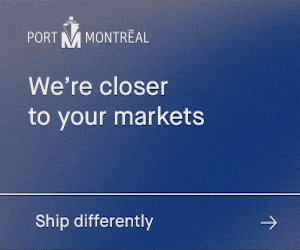
Surging demand for containerised goods, a rapid bounce-back from the world’s production powerhouse China, and disruptions to vessel supply as pandemic restrictions took hold at ports all combined to create the perfect storm for a crippling east-west container imbalance in 2020 and into 2021.
While containers from Asia were sent to North America and Europe, due to Covid-19 restrictions comparatively little moved in the opposite direction. Analysts calculated a 40% container imbalance in North America as of March 2021, meaning that for every ten containers that arrived only four containers were sent back, leaving six at the arrival ports.
Phillip Sanfield, director of media relations at the Port of Los Angeles, said that the Port has experienced an unprecedented surge in one-way import trade since mid-year 2020, resulting in record cargo volumes.
“Every node of the supply chain has been challenged, and we’re working with all our partners to improve efficiency on many fronts.”
The number of ships at anchor in the San Pedro Bay for Los Angeles/Long Beach (LA/LB) ports was about 40 in February 2021. This had fallen to about 20 in May 2021.
“Our goal is to significantly reduce to just a few ships at anchor by June.” In May, the port was working an average of about 15 ships at berth on a daily basis. Pre-pandemic, it was about 10 ships. “So, our productivity has gone up dramatically,” said Sanfield.
On the US east coast, the Port Authority of New York and New Jersey has faced the same pressures and has worked with its stakeholders across logistics sectors to ensure the fluidity of port operations. It called on ocean carriers to continue to help ports around the US relieve ongoing tightness in the supply chain through mitigation actions, such as deploying extra loaders and evacuating empty containers as quickly as possible.
To put the scale of the problem in perspective, in April 2021 the combined total volume of loaded outbound containers at LA/LB was down 3% to 172,836TEU, while the volume of inbound loaded boxes rose 3% to 500,097TEU. In the same month, LA handled 171,874 emptyTEU, up 27% over the same month in 2020, while Long Beach saw a 33% growth in empty handling to 125,015TEU.
A lack of empty containers has stymied trade, with claims of some ships leaving with space still available because there were insufficient empty containers to load goods. China has been working hard to produce additional containers: the China Container Industry Association said China has been producing 300,000TEU a month since September to alleviate the shortage – but the perennial imbalance means that this will simply lead to more empty storage at US and European ports.
The lack of containers in the right locations, as well as a lack of containers more generally, has had an impact on freight rates. Transportation costs had risen from about US$1,500 per container to US$6,000-US$9,000 per container by February 2021. Prices for actual containers have also shot up with manufacturers reportedly charging US$2,500 for a new container, up US$900 from 2020’s prices.
The effect of the Suez Canal blockage further exacerbated imbalances with a substantial amount of vessels forced into the same berthing windows after being held up behind the Ever Given. This temporarily placed a significant strain on infrastructure at European and US ports, led to a round of missed sailings and, crucially, delayed the flow of empty containers back to Asia.
According to Container xChange, Europe’s leading container ports were still receiving far more boxes than were departing in May 2021. The average Container Availability Index (CAx) reading of incoming 20 dry TEU across three of Europe’s biggest ports – Rotterdam, Antwerp and Hamburg – climbed 3% at the end of April compared with the week before. At Rotterdam, box numbers rose +3.75% week-on-week; at Antwerp the week-on-week increase was +3.5%, while at Hamburg it was +2.2%. An index reading of below 0.5 means more containers leave a port compared to the number which enter. Above 0.5 means more containers are entering the port.
Hamburg has recorded a CAx reading of above 0.8 since the beginning of March 2021. Rotterdam’s CAx reading has risen steadily in 2021, climbing from 0.65 in week 1 to 0.74 by the beginning of March and up to 0.83 by the end of April. Antwerp, meanwhile, recorded a CAx of 0.38, 0.78 and 0.9 respectively.
Dr Johannes Schlingmeier, CEO and founder of Container xChange, said: “Europe’s top container terminals have been struggling to keep congestion at bay, with incoming boxes outweighing outgoing boxes for much of 2021. The closure of the Suez Canal appears to have only made the box crunch at Europe’s hubs only slightly worse than it already was.
“What we’re hearing from our container leasing and trading members is that they find it increasingly difficult to book export containers with the carriers across Europe. It seems shipping lines are prioritising empty containers in order to move the boxes back to China as fast as possible.”
The article is written by shipping experts of the International Shipping Centre Development (ISCD) Index, a collaboration between the Baltic Exchange, an independent source of global maritime market information, and the Chinese state news agency, Xinhua.
The index, in its eighth edition, provides an annual independent ranking of the performance of the world’s largest cities that offer port and shipping business services.








